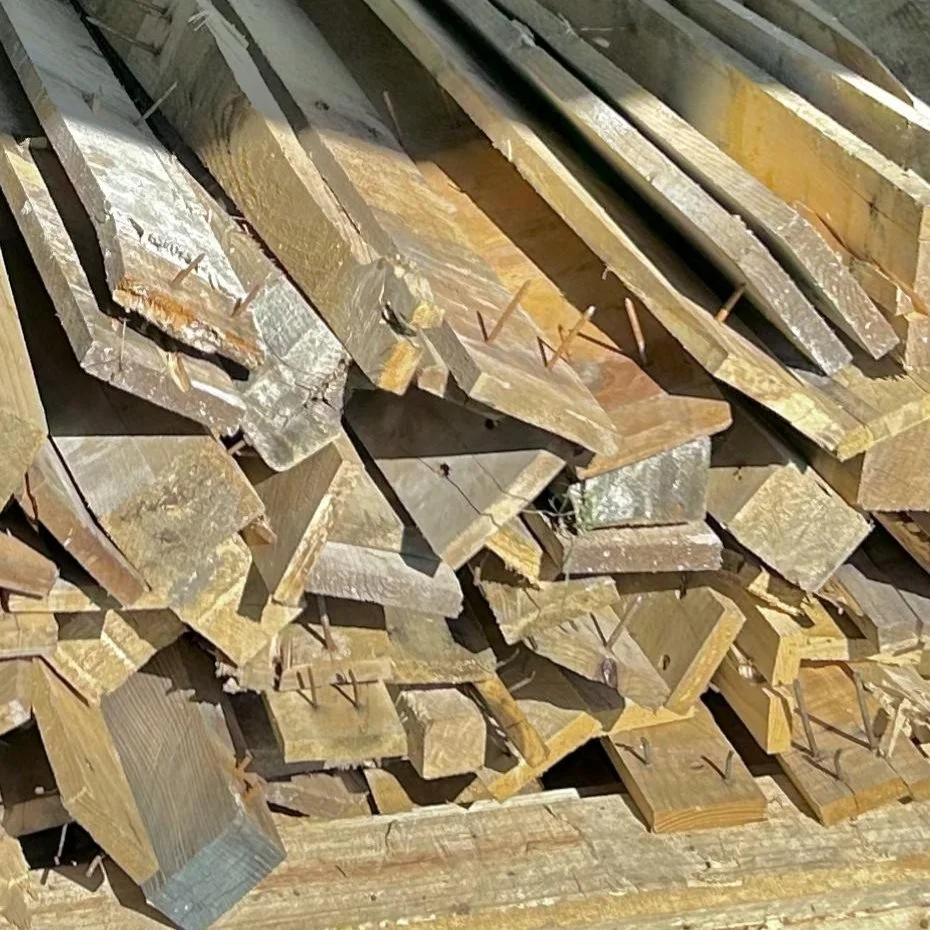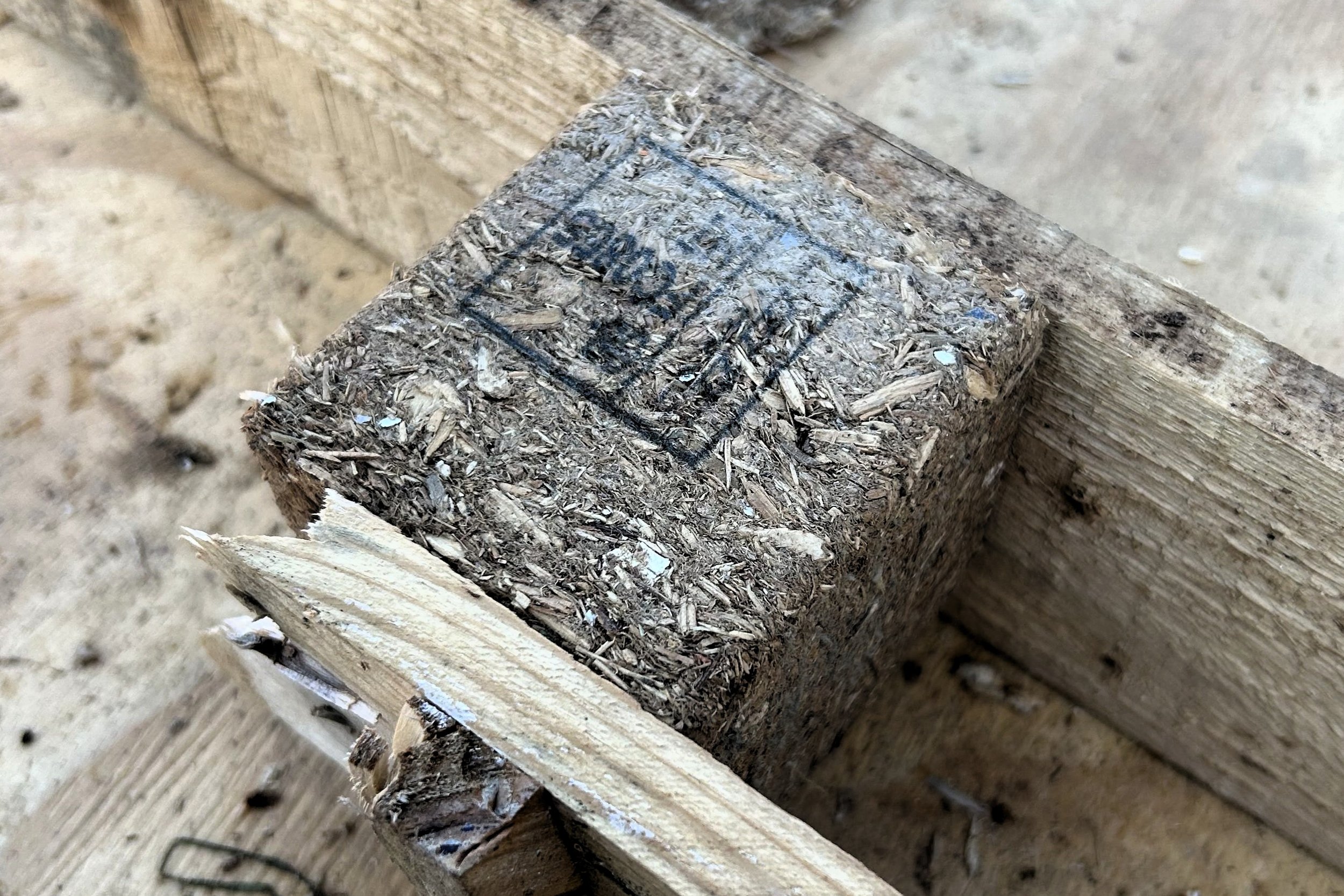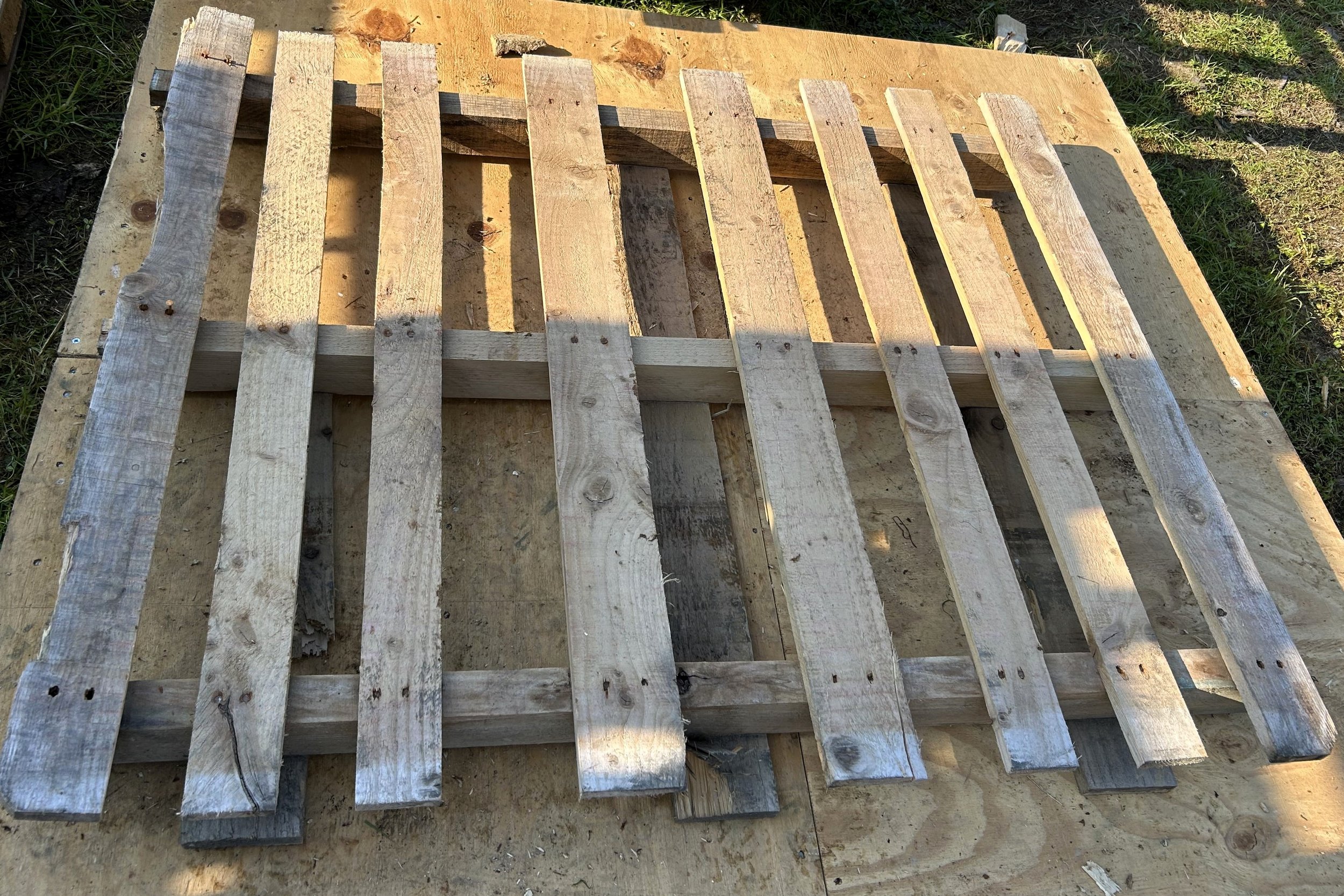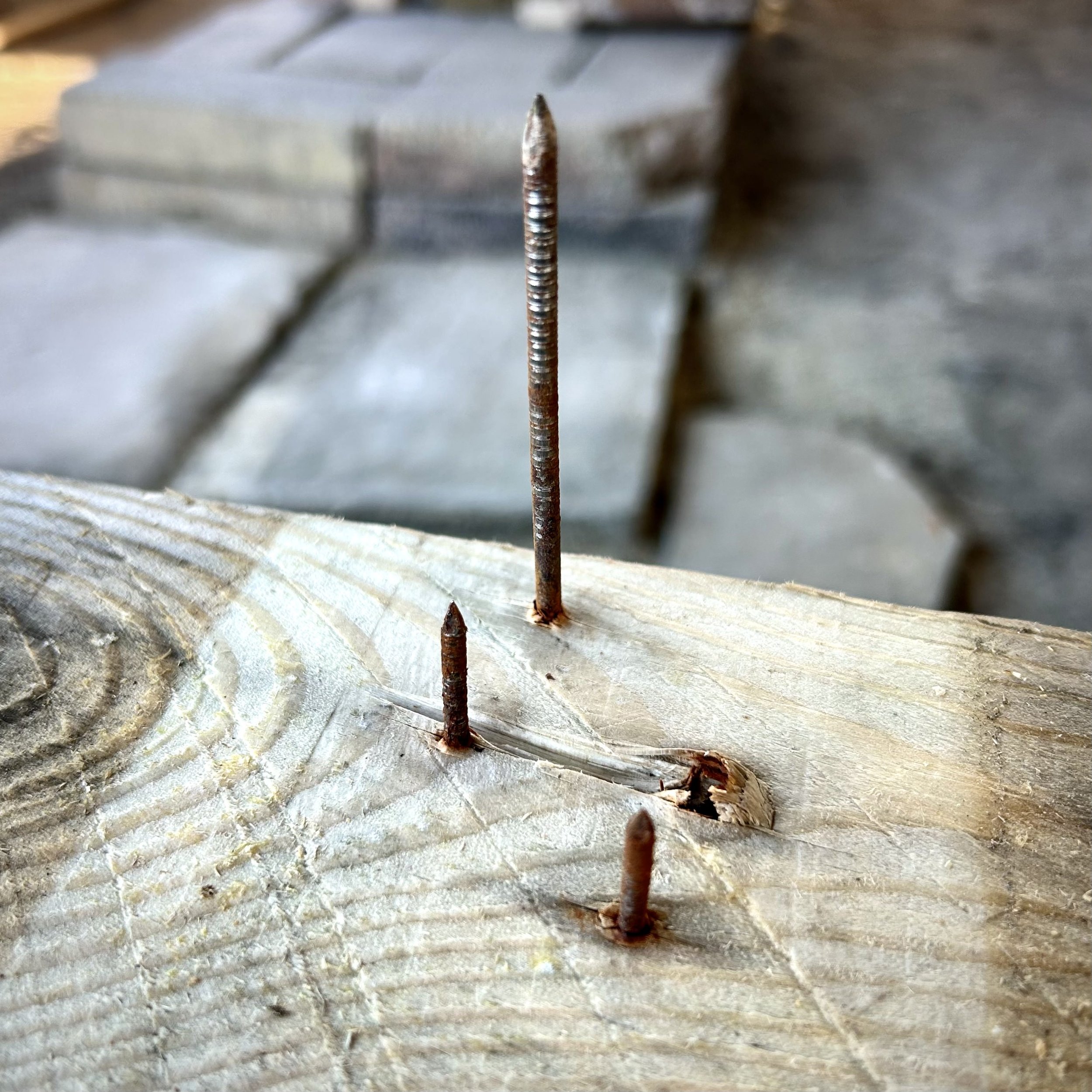Fast Fire Fuel
Traditionally wood fired kilns are situated close to a reliable source of fuel-wood. Oxford University Kilns Project is nestled in Wytham Woods where there is an extensive and long running programme of felling the non-native Western Red Cedar, along with managing Ash and Oak dieback. This source of fuelwood is, although now expensive, vital for the anthropological, creative, and technical research being led by Robin Wilson, and carried out by thinking folk from diverse geographies and demographics.
The three fast-fire kilns which Robin and Claude have pioneered and developed here explore a different model, and are mostly fueled by waste pallet-wood which was destined for transport and incineration. The environmental and economic advantages, therefore, of using this waste wood are considerable and self-evident, so here are a few practical points to consider:
What is a pallet?
Not all pallets are created equal, and you will likely not be able to pick and choose exactly which types of pallet you can use. If you arrange permission to collect the material yourself from local industrial units then your agreement probably will involve the phrase “Yes, take it away, but take it all”. Similarly, if a haulage or waste removal company agrees to divert lorries to your site then you will be at the whim of what happens to be in that load. The size, weight, thickness, age, condition, wood-type, chemical-treatment, and fixings can vary hugely, and you will need to be creative in how you respond to these differences.
Pallet parts
In very simple terms a pallet is made of planks and blocks; fast-fire kilns need the planks, but the blocks are at best too thick and at worst a genuine hindrance in the firings. Blocks are sometimes made of timber, and sometimes reformed from wood-chips and glue (like chip-board). The chip-board blocks will very quickly choke the firebox, and I suspect the glues used may even contain fire retardant chemicals. The timber blocks will burn much more slowly, and not coal down into small embers. The planks will (much as with split logs) vary in thickness, density/strength, and resin content. Experiment which when to use each during the firing: thicker planks may slow things down; thinner planks may be all but fluff and give little temperature gain.
Site management
Pallets are mostly air, and will take up a lot of space on site until they are broken down. And then there are the nails… Clean/sweep your site after every splitting session, as there WILL be nails and they WILL be sticking upwards and looking for your feet. Perhaps also invest in a pair of work shoes with reinforced soles (screwfix and others in UK stock various options).
To pry or to cut?
With practice, and cooperative nails, it takes around 9mins to pry apart one pallet using a pallet buster. Owing to the leverage needed, there are inevitably parts which cannot be broken down any further.
It took me around 10mins to cut through the nails using a demolition saw. Without the nails sticking out each plank can be stacked neatly, and there is a reduced risk of injury. The machine is noisy, and the vibrations can be a little brutal after lengthy use. The blades will need replacing, the batteries need to be charged regularly (or a trailing cable will have to be managed), and the machine represents a considerable expense!
Clearly there are pros and cons to each and ideally you have both tools. The pry-bar is good for most of the work, and then the saw lets you cut the remaining blocks from now shorter lengths of plank forming ideal stock for splitting into kindling.
Get creative
Some pallets will not be suitable as fuelwood, but might be easily transformed into racking, bench space, shed-siding, cupboards, or even easting (just mind those nails!). So grab a cheap impact driver and a box or two of wood screws. The rest can be burnt up and made into Ash Glazes, or used as fuel for a pit-firing.
Practical Tips
1. Making a pallet platform on a wheelbarrow for easy transport of your planks. This may save time if your site is large: Remove the planks from the side with fewest. Use a ratchet strap to hold this platform onto the wheelbarrow, creating two ‘bays’ into which you can pile your planks.
2. Keep the pry-bar points as far away from the edge of the plank you are removing as possible. It may seem counter-instinctual, but keeping the fulcrum further back means the plank is less likely to split.. I don’t fully understand the physics here, but try it.
3. Smooth leverage, rather than jerking force, tends to remove the nails better and reduce the likelihood of planks snapping. The corners, and the center planks, are fixed to the blocks using three nails (everywhere else it’s two): these joints are harder to open as the third nail is generally much longer. - More force is needed here, and it’s a slightly different technique.
And the firing?
If you are starting from scratch with your own fast-fire kiln design, I’d suggest you build yours one half brick longer, so that the firebox can fully accommodate an average-sized pallet plank.
I have heard reports of a single cone12 firing using wood from as many as 20 pallets, and as few as 10, but this will depend on the design of your kiln, how efficiently you fire, the calorific content of the planks, how much reduction you have, the length of the firing. etc. etc..
Look for planks with tightly packed resinous growth rings and a clearly defined orangey grain pattern. These planks are higher calorie pieces, and will boost the temperature in the kiln.
Generally thinner pieces will give a quicker, sharper spike in temperature, but you may see an equally sharp crash almost immediately afterwards. Remember that this wood is NOT selected for calories, and is fast-grown for low cost.
Beware paints and coatings! You will be in close proximity to fumes, so painted pallets might be best avoided. If the wood has a greenish tinge it may have been treated with a water-based Alkaline Copper Quaternary (ACQ) or Copper Azole product. These might release copper compounds into the flame-path which might lead to copper red flashes. - It’s not something I would purposefully look for as I’m not certain of the health implications, but if you do find copper-reds in the work (and the glaze/body doesn’t contain copper) this might be a reason.
Conclusion?
Potters have always adapted to the resources available to them. Know your material, and learn to work with it... and PLEASE share your findings!!
















